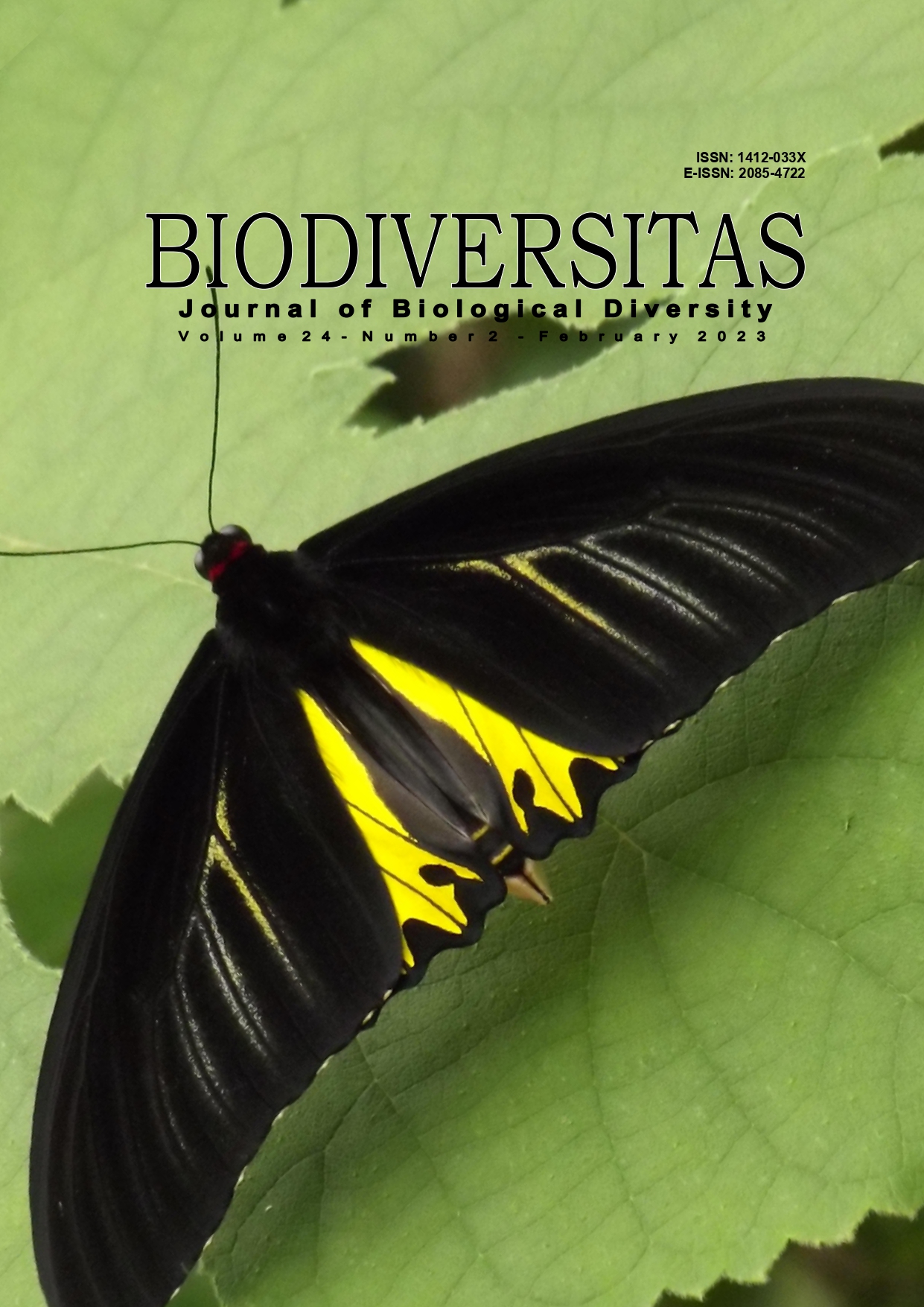Genotypes assessment for developing varieties on multi-canopy rice cultivation system
##plugins.themes.bootstrap3.article.main##
Abstract
Abstract. Khamid MBR, Junaedi A, Purnamawati H, Aswidinnoor H, Prasetyo LB. 2023. Genotypes assessment for developing varieties on multi-canopy rice cultivation system. Biodiversitas 24: 1175-1185. The Multi-Canopy Rice Cultivation (MCRC) system is a promising cultivation technique that adopts the advantages of cultivar mixture with different canopy vertical dispersion. This system may increase productivity by optimizing vertical space and more efficient input resources. This study aimed to assess the genotype derived from the IPB breeding line for suitability in the MCRC system by combining the short and the tall rice plants. Seed material used four genotypes of the short plants and four genotypes of the tall plants as promising breeding lines of IPB University and three released varieties as the control for productivity evaluation. The resultsshowed morphological and physiological performance as good as in the mono-genotype on the variables of the flag leaf shape, plant height, Soil Plant Analysis Development (SPAD)value, and Crop Growth Rate (CGR). Some genotype combinations achieved productivity higher than 1.00 Land Equivalent Ratio (LER) compared to the mono-genotype, indicating that increasing rice productivity is possible using the MCRC system. The result indicates that the suitable combination of the short-tall genotypes in the MCRC system may be considered to deal with the criteria of plant height, grain yield, and LER in the MCRC, as well as grain index and related grain quality.

